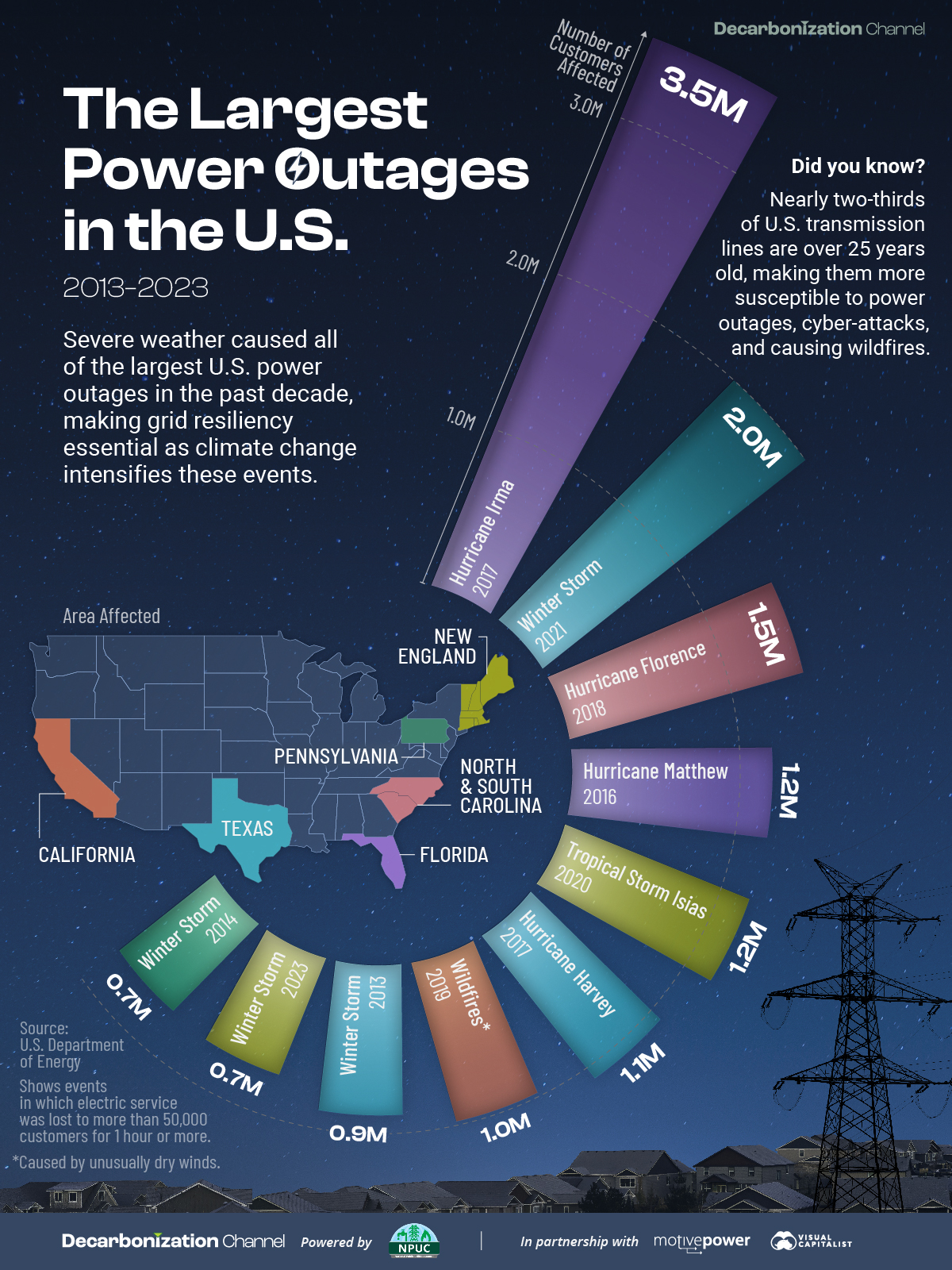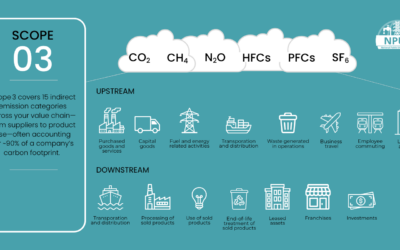Ranked: The Largest Power Outages in the U.S. (2013–2023)
Power outages—whether due to operational failures, extreme weather, vandalism, or fuel shortages—can have far-reaching impacts on both customers and utility companies.
Created in partnership with The National Public Utilities Council, this graphic shows the 10 largest power outages in the U.S. from the last decade, using data from the U.S. Department of Energy (DOE).
A Decade Of Power Disruptions In Review
The U.S. DOE defines a power outage as an event in which electric service is lost to more than 50,000 customers for one hour or more.
Between 2013 and 2023, all 10 of the largest U.S. outages—ranked by the number of customers affected—have been due to severe weather events. Hurricanes and winter storms, specifically, have caused eight of the 10 outages.
Hurricane Irma tops this list by leaving 3.5 million Floridians without power in 2017. Irma was a Category 5 hurricane that impacted the Southeastern state and several island nations, leading to more than $50 billion in damages in Florida alone.
While Florida experienced the largest outage between 2013 and 2023, Texas has the most events in the top 10 list. These were caused by a winter storm in 2021, Hurricane Harvey in 2017, and another winter storm in 2013.
Investing in a Resilient Grid
The causes of the U.S.’s largest outage events highlight the vulnerability of its transmission infrastructure to extreme weather.
As of 2023, 70% of U.S. transmission lines were over 25 years old. This makes them more susceptible to power outages, cyber-attacks, and sparking wildfires.
It is also relevant to note that extreme weather events are increasing in both frequency and intensity due to climate change. Addressing infrastructure vulnerability, therefore, may be a critical aspect of maintaining reliable power in the decades to come.
Learn more about how electric utilities and the power sector can lead on the path toward decarbonization here.





